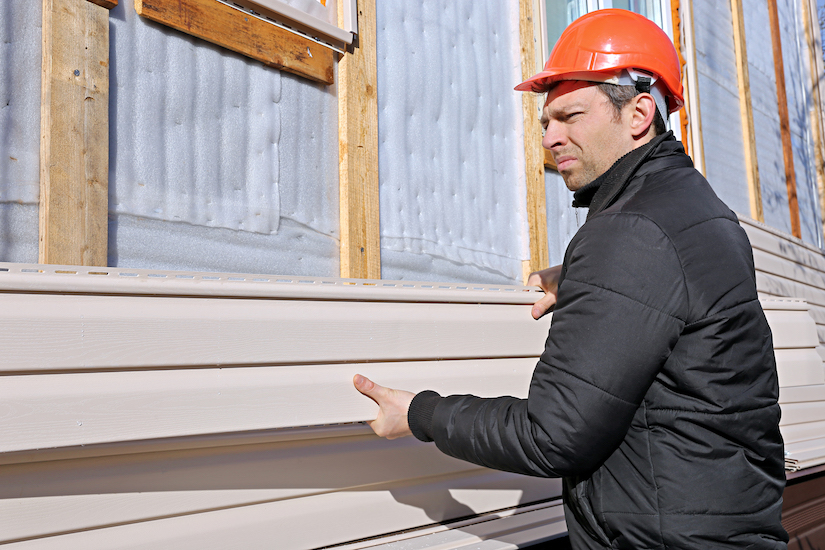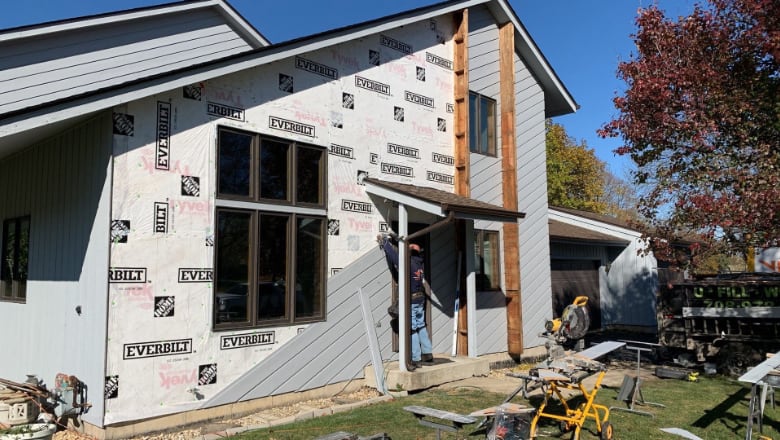Experienced Morris Siding Contractor Delivering Outstanding Curb Appeal
Experienced Morris Siding Contractor Delivering Outstanding Curb Appeal
Blog Article
The Essential Overview to the Different Sorts Of Exterior Siding and Their One-of-a-kind Benefits
In the world of home enhancement, choosing the best siding is a crucial choice that affects both aesthetic appeal and functional performance. The variety of materials readily available, such as wood, vinyl, fiber block, steel, and cement, each offer unique benefits that accommodate different demands and preferences. Comprehending these differences can considerably improve the durability and worth of a residential property - morris siding contractor. However, with numerous choices to take into consideration, which siding material really stands apart for your certain task? Checking out these choices can result in notified decisions that line up with both style and functionality.
Timber House Siding
Timber exterior siding, a popular selection for residential outsides, uses an ageless aesthetic that incorporates natural elegance with structural honesty. This siding material is offered in numerous styles, consisting of clapboard, roof shingles, and board-and-batten, allowing home owners to customize their façade to match their layout choices. Wood exterior siding is typically crafted from sturdy varieties such as cedar, redwood, or pine, which are known for their strength and ability to withstand ecological stressors.
Among the primary advantages of wood house siding is its superb insulation properties, which can contribute to power efficiency and lower home heating costs. Furthermore, wood house siding is eco-friendly, making it an ecologically pleasant choice when sourced sustainably. Normal maintenance, consisting of painting or discoloration, can prolong its life expectancy and enhance its appearance, allowing homeowners to preserve the natural beauty of the wood.
Nevertheless, potential downsides include sensitivity to insects, rot, and weather condition damages, necessitating sufficient treatment and upkeep - morris siding contractor. Regardless of these concerns, when appropriately taken care of, timber siding can supply a durable and stunning remedy that improves the character of a home while offering a cozy, inviting atmosphere

Vinyl Home Siding
Plastic home siding has become a leading choice for home owners seeking a low-maintenance exterior choice that combines resilience and price. This flexible material is crafted from polyvinyl chloride (PVC), making it resistant to numerous climate condition, including wetness and UV rays. As a result, vinyl siding does not warp, rot, or fade, making certain durable visual appeal.
One of the key benefits of vinyl siding is its substantial variety of colors and styles, enabling home owners to achieve the wanted search for their building without the need for constant repainting. Additionally, plastic exterior siding is simple to mount, which can considerably minimize labor prices throughout construction or restoration tasks.
Plastic exterior siding also adds to power performance. Many choices feature insulation support, which improves thermal efficiency, assisting to keep comfy interior temperature levels and possibly lowering energy bills. Its smooth surface helps with simple cleaning, requiring just routine cleaning with a yard pipe to get rid of dust and debris.
Fiber Cement House Siding
Fiber concrete house siding has actually acquired traction among contractors and property owners alike due to its remarkable mix of durability and visual convenience. Made up of a blend of sand, cellulose, and concrete fibers, this home siding choice is engineered to withstand severe weather, consisting of high winds, hefty rain, and temperature level changes, making it a lasting choice for household exteriors.

One of the main benefits of fiber cement siding is its resistance to bugs, such as termites, and its non-combustible nature, offering enhanced fire security. morris siding contractor. In addition, it is readily available in a large array of shades, styles, and structures, enabling homeowners to accomplish their wanted aesthetic without sacrificing efficiency
One more benefit is its low upkeep demands; fiber concrete exterior siding generally needs paint or discoloration every 5-10 years, which is much less constant than other materials. In addition, its longevity contributes to a reduced total expense of possession, as it lowers the demand for frequent fixings or substitutes.
Inevitably, fiber concrete exterior siding represents an exceptional financial investment for those looking for a durable, eye-catching, and versatile exterior option, combining both form and function to boost the home's curb appeal.
Metal Exterior Siding
The allure of metal exterior siding lies in its robust toughness and modern-day visual charm, making it a preferred choice for contemporary style. Readily available in materials such as light weight aluminum and steel, steel siding supplies a series of surfaces and colors, allowing homeowners to attain a tailored appearance that matches their design vision.

Energy effectiveness is an additional substantial benefit, as lots of steel siding products are developed with insulation choices that assist manage interior temperature levels. This can bring about lowered power prices with time. In addition, steel house siding is frequently recyclable, making it an eco friendly choice for sustainability-minded house owners.
The setup process for metal siding can be reasonably straightforward, leading to a quicker turnaround time for building and construction jobs. Generally, metal home siding integrates capability and design, making it a useful option for those looking for a aesthetically attractive and long-lasting exterior finish.
Block and Stone Siding
Block and stone house siding stands apart as an ageless choice that boosts the aesthetic beauty of any type of home. Known for their durability and reduced upkeep, these materials supply a remarkable return on financial investment while elevating the residential property's curb allure. Available in numerous colors, appearances, and patterns, brick and rock can be customized to fit varied architectural designs, from standard to modern.
Among the primary advantages of block and rock siding is their power performance. Both materials possess all-natural shielding residential properties that help regulate interior temperature levels, potentially decreasing home heating and air conditioning prices. Additionally, they provide remarkable fire resistance compared to other home siding alternatives, adding to enhanced safety.
One more benefit is their durability. Block and stone can last for decades, commonly requiring marginal upkeep past occasional cleansing. Unlike timber siding, they are invulnerable to parasites and rot, ensuring a long-lasting exterior that endures the aspects.
Conclusion
In summary, the option of home siding considerably affects a home's visual appeal, power effectiveness, and upkeep needs. Each kind of home siding-- whether wood, plastic, fiber steel, brick, or concrete and rock-- supplies distinct advantages tailored to different property owner choices and environmental conditions.
One of the main benefits of wood siding is its exceptional insulation residential or commercial see page properties, which can add to power effectiveness and reduced heating expenses. Furthermore, wood home siding is biodegradable, making it an ecologically pleasant option when sourced sustainably.One of the primary advantages of steel siding is its resistance to different ecological factors.Energy effectiveness is an additional significant advantage, as several steel siding products are made with insulation options that help regulate interior temperature levels. Each type of exterior siding-- her explanation whether timber, plastic, fiber metal, concrete, or block and stone-- uses one-of-a-kind advantages customized to numerous house owner choices and ecological problems.
Report this page